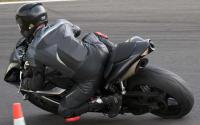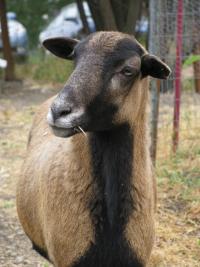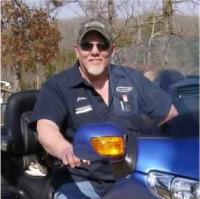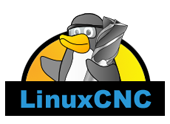I've seen the light (I think...)
- dangercraft
- Offline
- Premium Member
-

- Posts: 84
- Thank you received: 0
I've been working on the planning for the retrofit of the Tree VMC I recieved a few days ago, and after going through the linuxcnc documentation I think I understand now why Andy was telling me to use Velocity control as opposed to step pulse+direction mode. Maybe someone can correct me if I am wrong in my assesment: In step+dir linuxcnc runs the control in open-loop, even if you have an external positional feedback, such as a glass scale attached to the table and fed back to linux. This is why its prefereable to use a velocity control with the encoder feed back (say a rotary incremental encoder on the screw and another as a glass scale on the table joint, both fed back to linux cnc to "close the loop" so to speak. If this is the case, could one drive the the screw with a VFD and an AC motor and get the same results as using a servo and drive in velocity mode?
Here is the link to my Tree VMC thread:
www.linuxcnc.org/index.php/english/compo...=30&id=23113&limit=6
Frank
Please Log in or Create an account to join the conversation.
- andypugh
-

- Offline
- Moderator
-

- Posts: 23461
- Thank you received: 4992
If this is the case, could one drive the the screw with a VFD and an AC motor and get the same results as using a servo and drive in velocity mode?
In theory it ought to work, but in practice AC motors are just too inefficient at low rpms.
Most big servos are 3-phase motors, and are often called "AC servos". The difference is that they use permanent magnets in the rotor rather than eddy currents in the squirrel-cage to create the necessary rotor magnetic field.
Whether you could drive the VFD at high speed/high slip to get the required torque is a question I have just thought to ask in respect of my lathe spindle drive. I ought to try putting that in closed-loop control to see if I see an improvement at large diameters.
Please Log in or Create an account to join the conversation.
- mcenter
- Offline
- New Member
-

- Posts: 14
- Thank you received: 0
Mark
Please Log in or Create an account to join the conversation.
- dangercraft
- Offline
- Premium Member
-

- Posts: 84
- Thank you received: 0
Would this be the same concept as a BLDC motor?
So, do I understand correctly the part of the velocity drive mode versus the step dir mode in terms of linux cnc running step dir as open look regardless of external encoder feedback?
Frank
Please Log in or Create an account to join the conversation.
- mcenter
- Offline
- New Member
-

- Posts: 14
- Thank you received: 0
It might be just a case of semantics, but what I consider AC Servos, www.baldor.com/products/servomotors/c_series/bsm_cseries.asp is different from what you are describing, www.baldor.com/products/accontrols/vs_vector.asp
Mark
Please Log in or Create an account to join the conversation.
- PCW
-

- Offline
- Moderator
-

- Posts: 19074
- Thank you received: 5263
(linuxCNCs PID loop and the drives PID loop)
Please Log in or Create an account to join the conversation.
- BigJohnT
-

- Offline
- Administrator
-

- Posts: 6999
- Thank you received: 1176
Ahh, ok that makes sense. So I do need the servo motor and driver.
So, do I understand correctly the part of the velocity drive mode versus the step dir mode in terms of linux cnc running step dir as open look regardless of external encoder feedback?
Frank
Some servo drives will take step and direction input but if possible you want to use a velocity input with encoder feedback to the controller. I think the problem is something like you can only make steps so fast but you can easily tell a velocity drive "go faster" or "go slower" to get the feedback position in sync with the commanded position. or something along those lines... or something like you missed a step now take two steps to get back in position.
John
Please Log in or Create an account to join the conversation.
- dangercraft
- Offline
- Premium Member
-

- Posts: 84
- Thank you received: 0
Thanks!
Frank
Please Log in or Create an account to join the conversation.
- andypugh
-

- Offline
- Moderator
-

- Posts: 23461
- Thank you received: 4992
It might be just a case of semantics, but what I consider AC Servos, www.baldor.com/products/servomotors/c_series/bsm_cseries.asp is different from what you are describing, www.baldor.com/products/accontrols/vs_vector.asp
I was very much describing the former, but in the sense of how they differ from an induction motor. They are still a three-phase machine, but synchronous rather than asynchronous.
There used to be asynchronous AC servos too: en.wikipedia.org/wiki/AC_motor#Two-phase_AC_servo_motors
Please Log in or Create an account to join the conversation.
- VNR
- Offline
- Senior Member
-

- Posts: 61
- Thank you received: 7
I have this kind of drives and are working OKYou can run step/dir drives closed loop by feeding the encoder data back to LinuxCNC and running the step generator in velocity mode. I suspect its a little harder to get the best performance this way as now you have 2 position PID loops in series
(linuxCNCs PID loop and the drives PID loop)
First you have to autotune the drive without mechanics connection
Then you have to adjust the PID loop in LinuxCNC (first without mechanics conection and then with mechanics conection)
New (low cost) digital drives usually have step+direction and +-10V command input, high end usually have fieldbus control like thercat or profibus, but in my case i decided to use a low cost digital drive with step+dir instead of +-10V
The conection is: LinuxCNC (step) => (step) PID (Velocity) => Mesa card (In velocity mode) => Pulses (at velocity speed) => (Step+dir or quadrature) Drive => Motor
Encoder (motor) => Drive (quadrature) => Mesa card => PID (Velocity ) and LinuxCNC (position)
Please Log in or Create an account to join the conversation.
